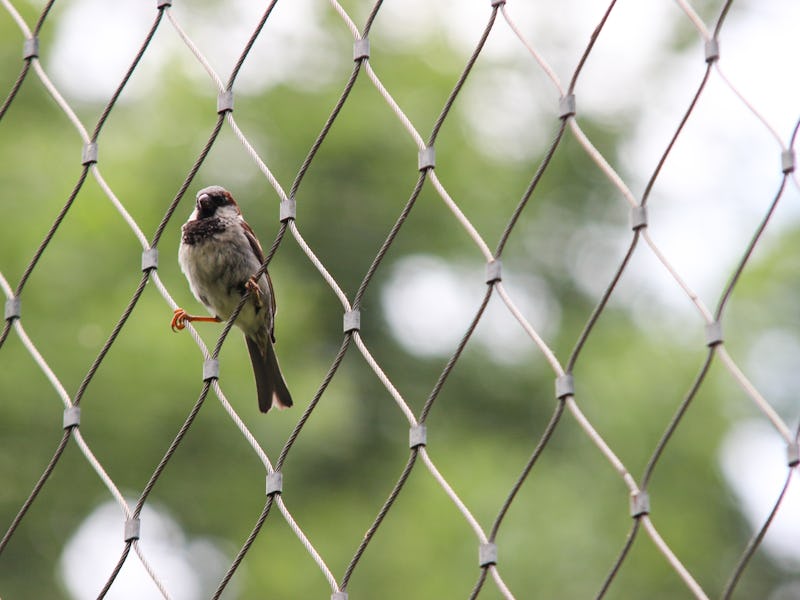Severe "Downsizing" Will Dramatically Resize the Animal World in 100 Years
Earth's wildlife will look very different in the next century.

The next time you tune into a Netflix documentary, be sure to pay nature’s large, majestic, creatures some respect. If predictions of a paper released Thursday in Nature Communications come true, we may not have much longer to marvel at giants of the animal world.
By the end of the next century, the “fast-lived, highly fecund, insect-eating, generalists” will rise and inherit the Earth as our large, “charismatic” species are lost, according to the new model. Developed by Robert Cooke, a Ph.D., candidate and Felix Eigenbrod, Ph.D., both of the University of Southampton’s geography and environmental science department, the model predicts that median animal body size will decrease by 25 percent in the next century as humanity drives more and more large creatures towards extinction.
“We predict the extinctions that will occur if we carry on business-as-usual for the next hundred years,” he tells Inverse.
Creatures like the black rhinoceros are already threatened. But by the end of the next century other large animals will continue to die out, Cook's analysis shows.
Only the Small Will Survive
The study used data on the “lifestyle strategies” of 15,484 land mammal and bird species to show that the next century will favor very specific types of animals. Overall, they looked into body mass, litter size, breadth of habitat, diet, and the time it takes them to reproduce, taking into account information from the International Union for Conservation of Nature’s Red List of species already at risk.
According to the analysis, the next 100 years aren’t looking great for creatures that reproduce slowly, need to consume a lot of food, or only do well in one type of habitat (like the tawny eagle or the black rhinoceros). The new conditions will favor smaller creatures like rodents (such as the dwarf gerbil) or small birds (like the white-browed sparrow-weaver) that live fast, have a lot of offspring, can subsist off of insects, and survive in multiple habitats.
A History of Downsizing
This isn’t the only time median body size has decreased in Earth’s history. In fact, the creatures of the world have already downsized about 14 percent compared to 130,000 years ago, when creatures like the giant ground sloths or mammoths went extinct, Cook explains.
What will make the next 100 years different is the fact that they will comprise a “severe downsizing” that’s faster than previous events and is likely to accelerate over time, as more and more large creatures are lost.
“For example, the loss of ecosystem engineers, such as elephants and hippos could lead to ecosystem degradation and restructuring, and could in turn lead to further extinctions of the species that depend on these ecosystems,” Cook says.
It’s not the downsizing itself that is threatening but rather the extinction of species that it involves. The sudden loss of species can set off a chain reaction that threatens many others, weakening the food network that keeps populations stable.
As a landmark United Nations biodiversity report released in May showed, 1 million of the world’s species is already at risk of extinction.
Fortunately, Cook, along with many other scientists, haven’t given up hope. If we act carefully now, we may be able to still produce full-length nature documentaries featuring the world’s larger animals in 2100 — but time is already ticking.
“We still have time to reduce human pressures on wildlife,” says Cook, “And through targeted conservation actions, we can protect the remarkable diversity of mammals and birds on Earth.”
Abstract:
Species, and their ecological strategies, are disappearing. Here we use species traits to quantify the current and projected future ecological strategy diversity for 15,484 land mammals and birds. We reveal an ecological strategy surface, structured by life-history (fast–slow) and body mass (small–large) as one major axis, and diet (invertivore–herbivore) and habitat breadth (generalist–specialist) as the other. We also find that of all possible trait combinations, only 9% are currently realized. Based on species’ extinction probabilities, we predict this limited set of viable strategies will shrink further over the next 100 years, shifting the mammal and bird species pool towards small, fast-lived, highly fecund, insect-eating, generalists. In fact, our results show that this projected decline in ecological strategy diversity is much greater than if species were simply lost at random. Thus, halting the disproportionate loss of ecological strategies associated with highly threatened animals represents a key challenge for conservation.